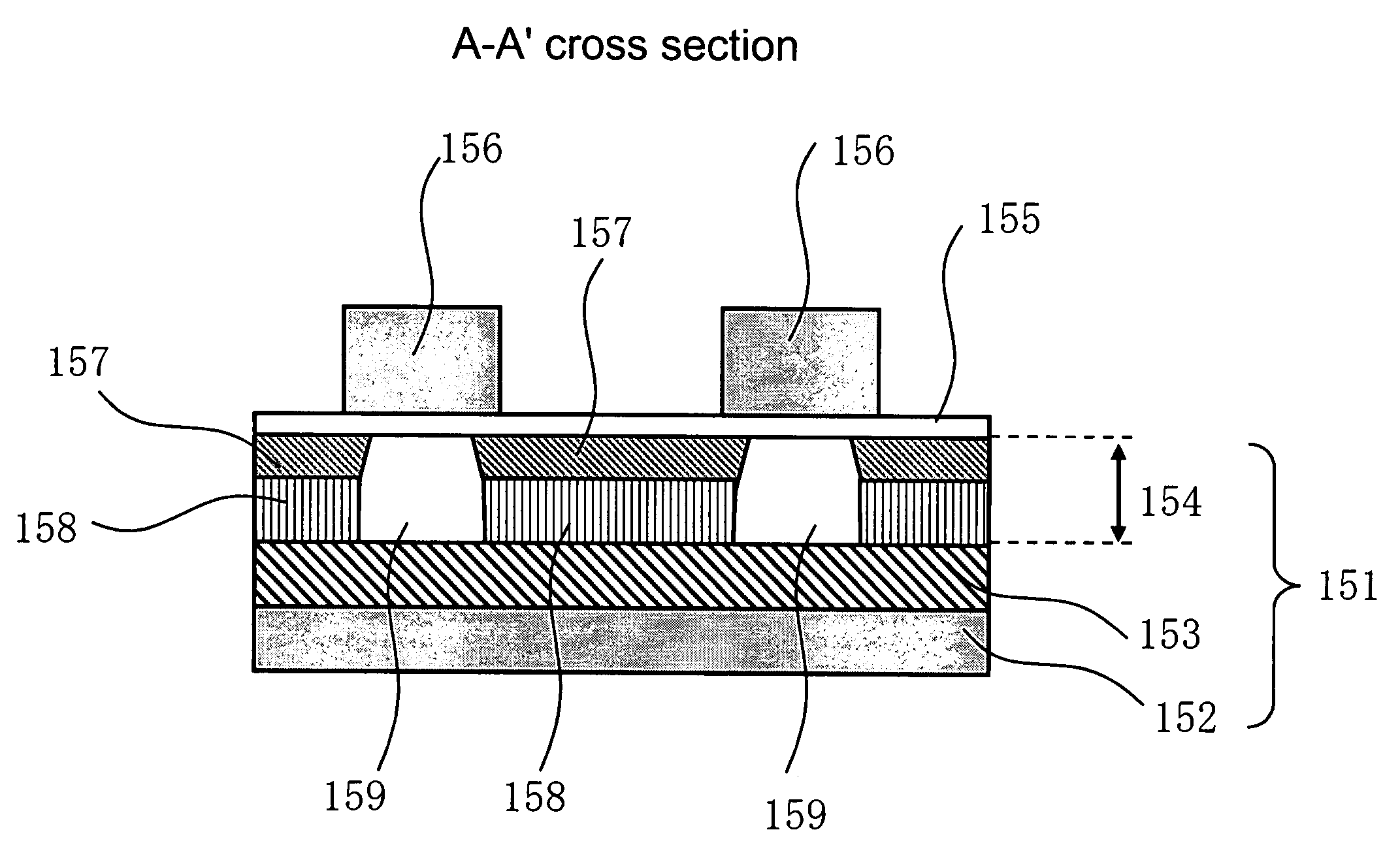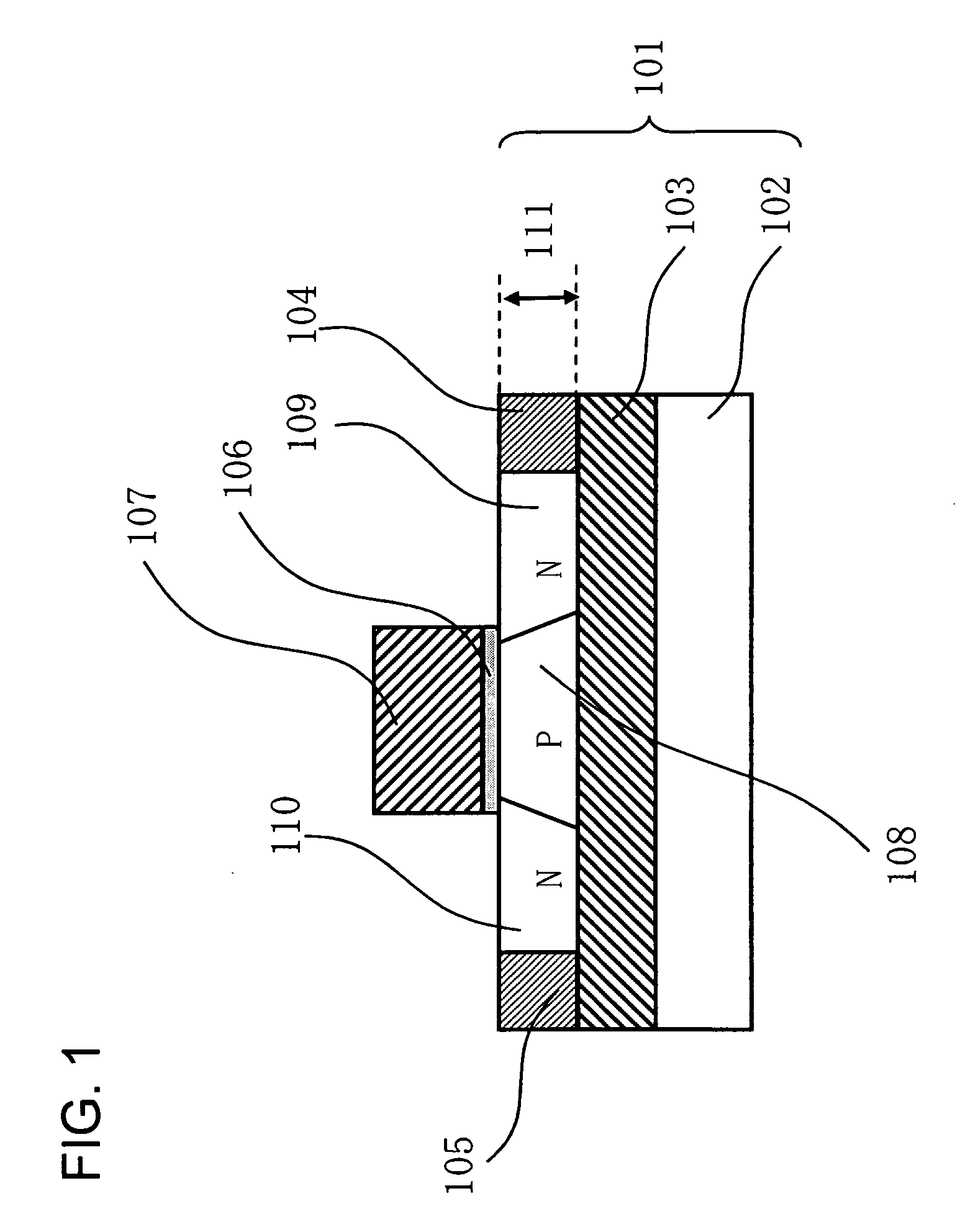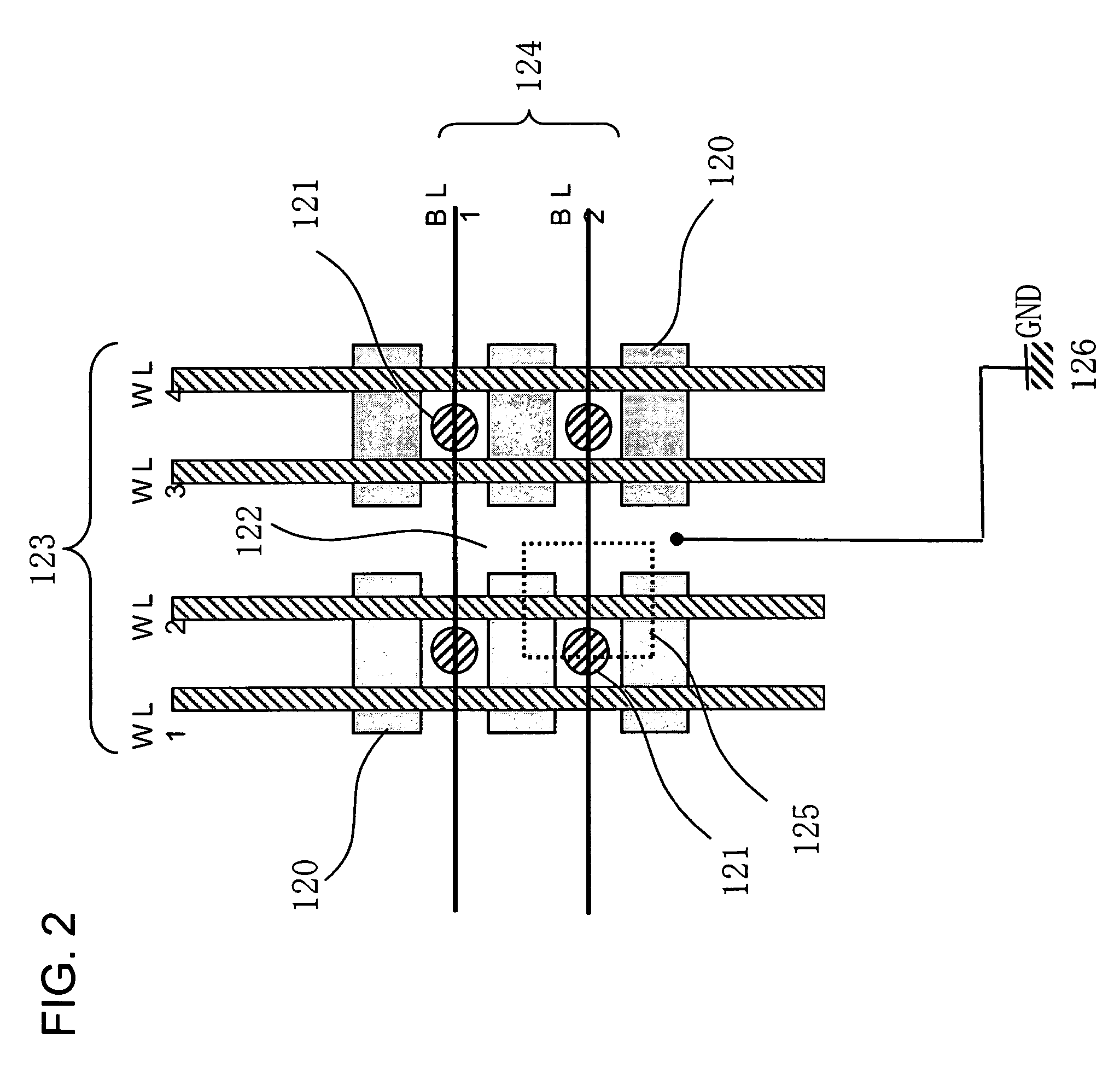Semiconductor memory device and manufacturing process therefore
a memory device and semiconductor technology, applied in the direction of semiconductor devices, electrical devices, transistors, etc., can solve the problems of increasing consumption current, increasing the difficulty of capacitor processing, and increasing the difficulty of capacitor removal, so as to facilitate the removal of a layer using cmp and stable circuit operation, the effect of high integration
- Summary
- Abstract
- Description
- Claims
- Application Information
AI Technical Summary
Benefits of technology
Problems solved by technology
Method used
Image
Examples
example 1
[0179]There will be described a process for manufacturing Example 1 with reference to the drawings.
[0180]First, before describing all the steps in the manufacturing process for a semiconductor memory device of this example, there will be described a process for forming isolation regions having different depths (when using process (a) as the step of forming the isolation region A and the isolation region B).
[0181]FIGS. 8 to 13 are cross-sectional views of individual manufacturing steps, showing a process for forming isolation regions having different depths in the same semiconductor chip. In FIG. 8, 201 is an SOI type substrate consisting of three layers, that is, a lowermost silicon substrate (semiconductor substrate) 202, a silicon oxide layer (SiO2) 203 as an insulating layer and an upper silicon layer (semiconductor layer) 204.
[0182]First, a silicon oxide film 205 and a silicon nitride film (Si3N4) 206 were formed on the upper silicon layer 204 of the SOI type substrate. Then, pa...
example 2
[0203]There will be described a second example of a manufacturing process for a semiconductor memory device with reference to the drawings. FIGS. 19 to 21 are cross-sectional views illustrating a process for forming two isolation regions having different depths in Example 2 (when using process (b) as the step of forming the isolation region A and the isolation region B). The components described for Example 1 are denoted by the same numbers.
[0204]As shown in FIG. 19, a silicon oxide film 205 and a silicon nitride film 206 were formed on an SOI type substrate 201 consisting of three layers: a lower silicon substrate (semiconductor substrate) 202, a silicon oxide layer (insulating layer) 203 and an upper silicon layer (semiconductor layer) 204. Then, patterning was conducted to form a trench (hole) 220 and a trench B 221 for an isolation region. Here, an etching depth of trench 220 in the silicon layer 204 is the same as that in trench 221, that is, an etching amount was adjusted such...
example 3
[0211]Next, Example 3 will be described with reference to the drawings. FIGS. 22 to 24 are cross-sectional views showing a process for forming two isolation regions having different depths in Example 3 (when using process (c) as the step of forming the isolation region A and the isolation region B). The components described in Example 2 are denoted by the same numbers.
[0212]First, to the step of FIG. 19 illustrated in Example 2, a trench A 220 and a trench B 221 for isolation region which had the same depth and did not reach the silicon oxide layer 203 were formed as described in Example 2.
[0213]Next, as shown in FIG. 22, only the trench B 221 for isolation formed in the region where a shallow isolation region B is to be formed was covered by the photoresist film 222. Then, a region C 225 from the bottom of the trench B 220 to the insulating layer in a thickness direction was ion-implanted with oxygen at a dose of 1×1015 to 1×1016 ions / cm2 and an implantation energy of 20 to 100 KeV...
PUM
 Login to View More
Login to View More Abstract
Description
Claims
Application Information
 Login to View More
Login to View More - R&D
- Intellectual Property
- Life Sciences
- Materials
- Tech Scout
- Unparalleled Data Quality
- Higher Quality Content
- 60% Fewer Hallucinations
Browse by: Latest US Patents, China's latest patents, Technical Efficacy Thesaurus, Application Domain, Technology Topic, Popular Technical Reports.
© 2025 PatSnap. All rights reserved.Legal|Privacy policy|Modern Slavery Act Transparency Statement|Sitemap|About US| Contact US: help@patsnap.com



